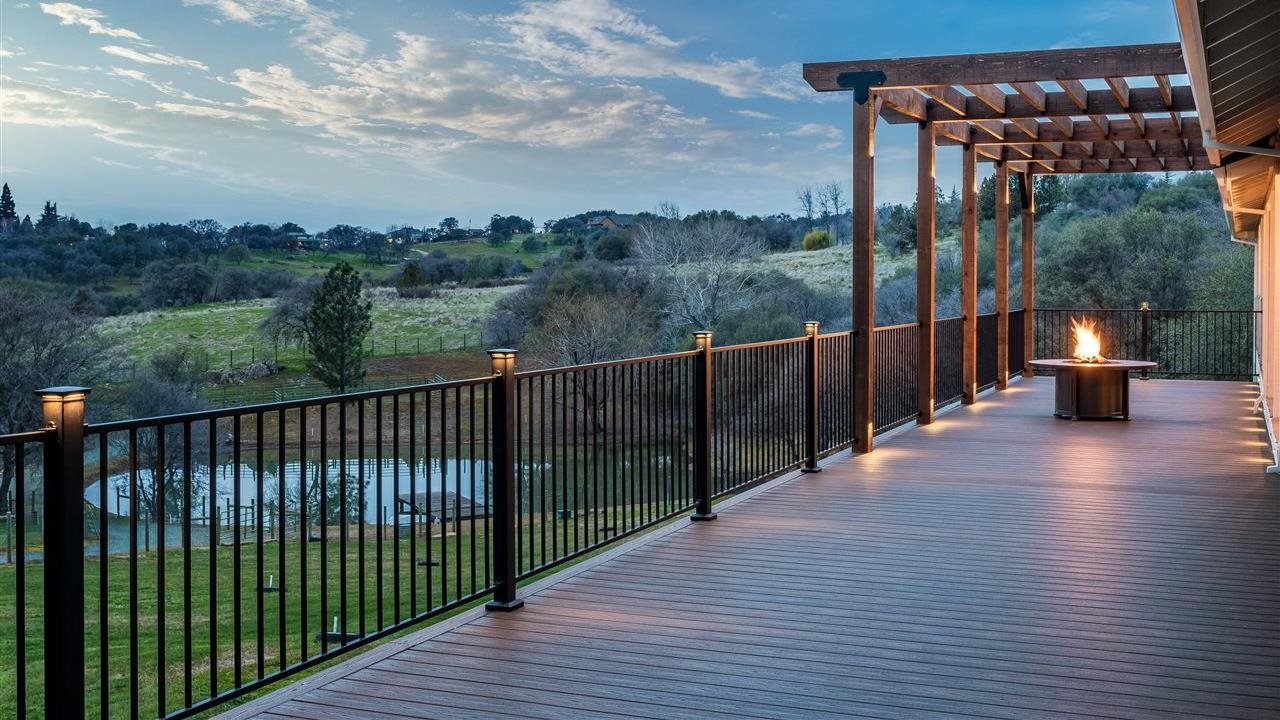
(BPT) – According to a recent survey on the latest outdoor living trends, home improvement pros and deck building specialists tell Qualified Remodeler magazine that, “everyone is thinking about building something bigger, better, stronger and wider,” and that “homeowners are requesting increasingly larger, more customized decks.” The appeal of more expansive, retreat-worthy decks should come as no surprise considering the unencumbered enthusiasm for outdoor living that has swept the country over the course of a notably unprecedented year.
If you also find yourself dreaming about building a sprawling deck to relax on this summer, first consider the type of building materials you’ll need to tackle the project. Lumber has been the traditional deck building material of choice, largely for its low upfront cost and familiarity. However, the series of lumber mill closures in the spring of 2020 wreaked havoc on the building industry’s supply chain, sending lumber prices through the roof. The outdoor living explosion has only further driven up the price. In fact, industry findings from April 2021 reported the price of lumber had jumped to a record-breaking $1,048 per thousand board feet — up nearly 200% from the start of the pandemic. Demand for the commodity product is only poised to grow during peak outdoor living months.
Don’t let historically high lumber prices empty your wallet or material scarcity put your deck project on hold altogether. Innovative manufacturers are bringing wood-alternative offerings to the table that provide weatherability, premium performance and unmatched customization capabilities. Consider these three alternative building products before you break the bank building your dream deck.
1. Composite decking
One of the many allures of today’s composite decking is that it emulates the natural wood grain aesthetic and richness that standard wood deck boards provide, but lacks the propensity to warp, crack or deteriorate over time. Because it’s incredibly resilient and can handle whatever Mother Nature throws its way, it will stand strong and look beautiful underfoot wherever you call home, from mountainous snow-shrouded settings to sun-parched desert landscapes. What’s more, composite deck boards are engineered to last longer than traditional wood decking. Leading brands offer products that can last 25 years or more, making these readily available boards a sustainable and cost-effective purchase when considering product longevity. With its impressive wood-emulation and enduring composition, composite decking is a smart choice for deck projects.
2. Steel deck framing
Once surface boards have been selected, it’s time to think about where your boards will rest. While pressure treated lumber is often the de facto deck framing material of choice, soaring lumber prices and availability concerns are now shedding light on alternatives like steel. Strong and durable, many are beginning to recognize how well steel performs as the underbelly of a deck system. “Since today’s wood-alternative deck boards are engineered to last for several decades, homeowners want enduring framing materials that can match the longevity of their surface boards,” said Toby Bostwick, VP of Product & Brand at Fortress Building Products. “The benefits of purchasing a steel framing system make a lot of sense from an investment standpoint, especially when factoring in material longevity, ongoing maintenance costs and treated lumber’s current market rate.”
Framing with steel will also eliminate issues associated with moisture absorption, one of the most common reasons wood frame decks begin to show signs of decomposition. In fact, steel is resistant to most tangible threats, including rot and decay, fungi, pests (such as termites) and weathering. In application, this means steel frame profiles will keep surface boards flat and smooth underneath your feet, safeguarding your investment. Not only does steel framing offer long-lasting support for your chosen deck boards, but it also offers a modern, high-end aesthetic that’s rising in demand. While the rising price of pressure treated lumber and the current lumber shortage will certainly drive framing trends this summer – the shift in mentality may be permanent, given steel’s impressive performance.
3. Aluminum railing
While it’s certainly natural to gravitate toward a familiar railing material like wood as you finish out your deck project, an aluminum system can bring strength and personality to a larger deck at a cost-effective price point. A wholly customizable railing system, the aluminum panels of Al¹³ HOME™ from Fortress Building Products can be personalized with an array of infill options — including cable and glass insets — to accommodate the vision behind your dream deck. What’s more, the system comes with an Accent Top Rail (ATR) and cap rail clips, and is dressed in a multi-layered anti-corrosion powder coating for a no-fuss solution. Not only does this ensure lasting style and safety around the perimeter of a deck, but it also helps create a finished deck structure that requires very little upkeep. For peace of mind, the railing is backed by a limited lifetime warranty. With its dreamy customization capabilities and strong warranty, this readily available aluminum railing solution is something your family can “lean” on this summer.
Build a bigger, better, stronger deck now
With today’s wood-alternative building products within reach, there’s no need to put your deck project on hold until debilitating lumber prices retreat. Instead, you can “deck” out your larger-than-life outdoor living space with dreamy solutions that serve up performance and lasting style.
